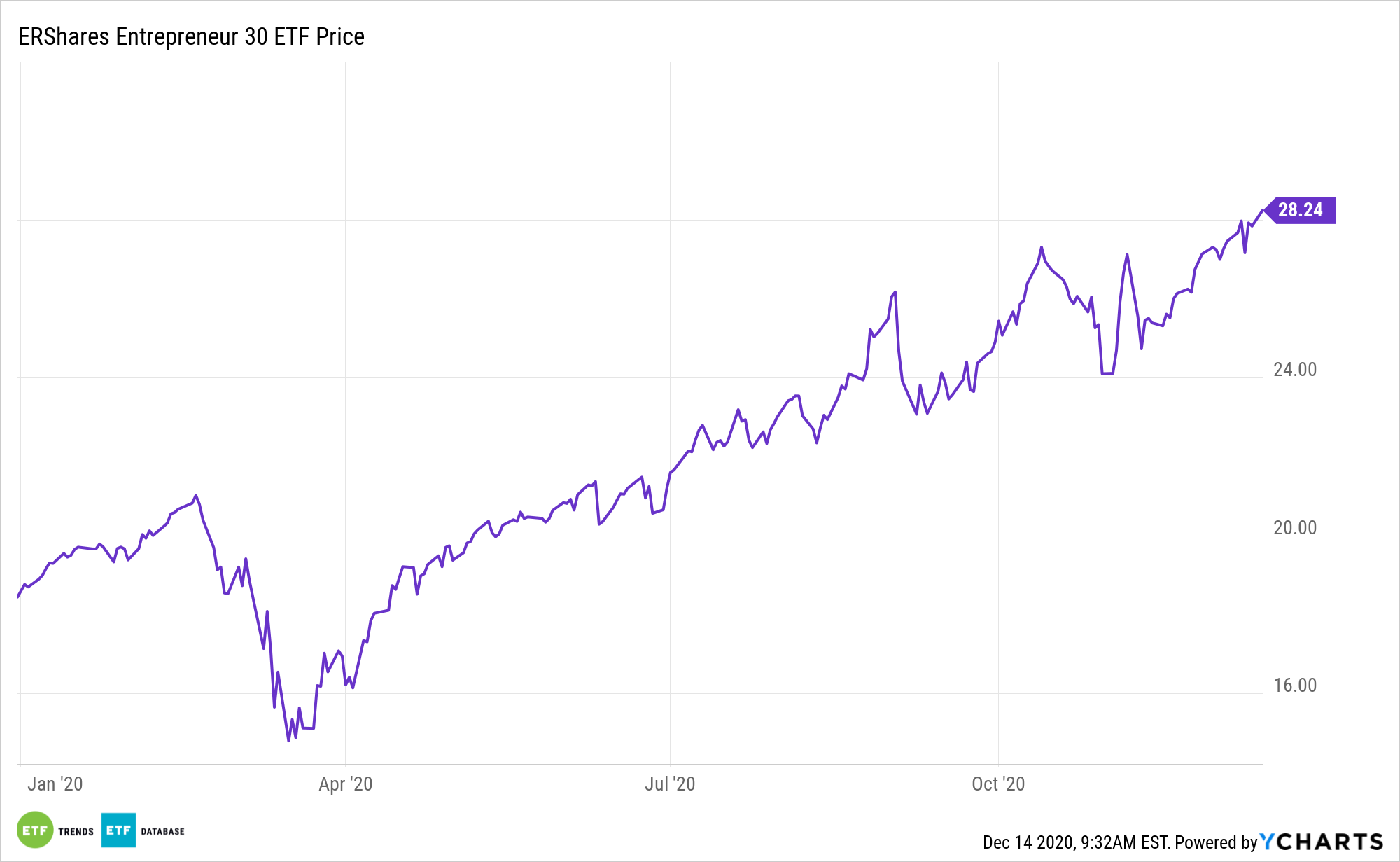Investors looking for a fresh, layered approach to a pair of beloved investment factors are likely to find benefits with the Entrepreneur 30 Fund (ENTR).
The Entrepreneur 30 Fund tries to reflect the performance of the Entrepreneur 30 Index, which is comprised of 30 U.S. companies with the highest market capitalizations and composite scores based on six criteria referred to as entrepreneurial standards. ENTR primarily invests in US Large Cap companies that meet the thresholds embedded in their proprietary Entrepreneur Factor (EF).

ENTR isn’t a traditional large-cap blend fund, nor is it a prosaic factor strategy. The ERShares ETF goes deeper than typical stock or ETF offerings.
The factors screened include management, which requires set factors regarding a company’s management must be met for a company to be included, such as the turnover among the top five executives within a company as compared to other companies in the broader universe.
The ERShares Indexing Methodology
Too often, investors are forced to decide between growth or value or allocate to those factors via multiple securities. ENTR is a solution for those inefficiencies.
ENTR’s indexing methodology incorporates the ERShares Entrepreneur Factor, which delivers strong performance across a variety of investment strategies without disrupting investors’ underlying risk profile metrics.
ERShares incorporates a bottom-up investment orientation, powered by artificial intelligence, that stands above other investment factors such as momentum, sector, growth, value, leverage, market cap (size), and geographic orientation. With the aid of AI and Thematic Research, ERShares incorporates a macro-economic, top-down approach that integrates changing investment flows, innovation entry points, sector growth, and other characteristics into a dynamic, global perspective model.
ENTR’s global perspective is an added bonus at a time when market observers are expecting ex-US stocks to rally.
Over the past 50 years, U.S. Markets have outperformed non-U.S. markets for periods of approximately 4-5 years before reverting, with non-U.S. markets dominating for a comparable period. However, we are now experiencing a period of 12-year dominance by U.S. Markets, which is about 2-3 times longer than typical. Such is long overdue for a correction.
For more on entrepreneurial strategies, visit our Entrepreneur ETF Channel.
The opinions and forecasts expressed herein are solely those of Tom Lydon, and may not actually come to pass. Information on this site should not be used or construed as an offer to sell, a solicitation of an offer to buy, or a recommendation for any product.

